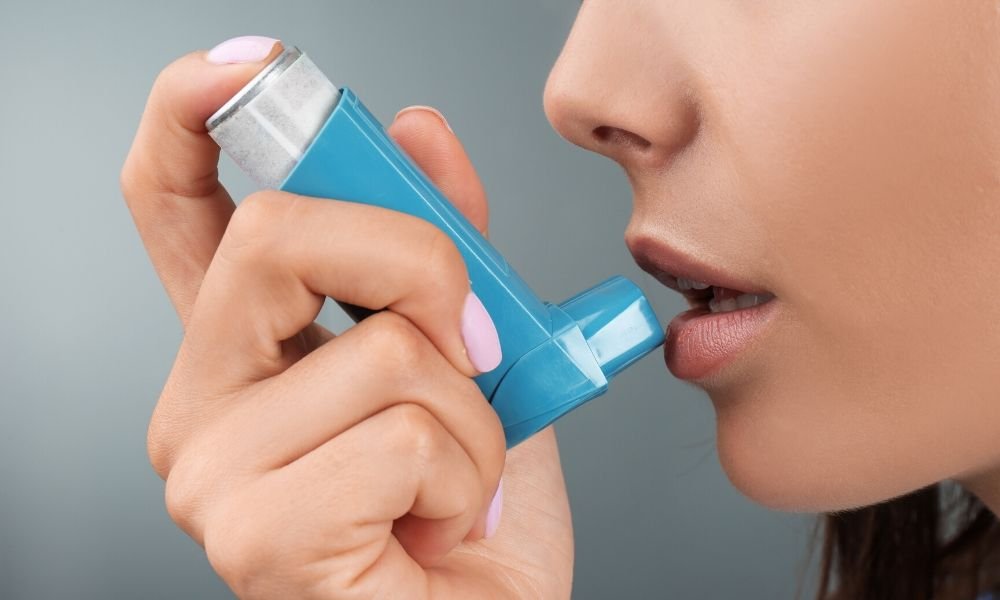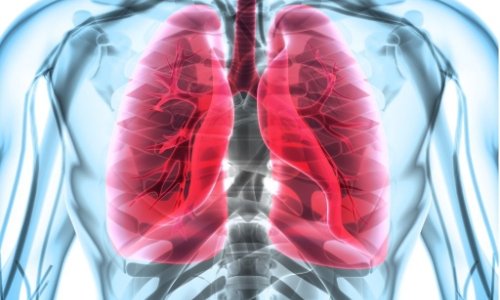Asthma Symptoms And When The Symptoms of Asthma In Children Can Be Dangerous?

How does asthma feel
Asthma is characterized by inflammation of the bronchi with an increased production of sticky secretions in the tubes. People with asthma experience symptoms when the airways narrow, become inflamed, or fill with mucus. Common asthma symptoms are:
- Cough, especially at night
- Panting
- Shortness of breath
- Chest tightness, pain, or pressure
However, not everyone with asthma experiences the same symptoms in the same way. You may not have all of these symptoms, or you may have different symptoms at different times. Your asthma symptoms can also vary from asthma attack to next asthma attack, being mild during one and severe during another.
Some people with asthma may go without symptoms for long periods of time, interrupted by a periodic worsening of their symptoms called asthma attacks. Others may experience symptoms of asthma every day. In addition, some people may only have asthma while exercising or asthma with viral infections such as colds.
Mild asthma attacks are generally more common. Usually the airways open within a few minutes to a few hours. Severe seizures are less common but last longer and require immediate medical attention. Identifying and treating mild asthma symptoms is also important to prevent severe episodes and better control asthma.
Know the early symptoms of asthma
Early warning signs are changes that occur just before or at the beginning of an asthma attack. These signs may appear before the known symptoms of asthma and are the earliest signs that your asthma is getting worse.
Generally, these signs are not severe enough to prevent you from doing your daily activities. Recognizing these signs can help stop an asthma attack or prevent one from getting worse. The early warning signs of an asthma attack are:
- Frequent cough, especially at night
- Easily lose breath or feel short of breath
- You feel very tired or weak while exercising
- Wheezing or coughing after exercise
- Feel tired, easily annoyed, grumpy, or moody
- Decrease or change in lung function, measured with a peak flow meter
- Signs of a cold or allergies (sneezing, runny nose, cough, nasal congestion, sore throat, and headache)
- Sleep disorders
If you have these warning signs, adjust your medication as outlined in your asthma action plan.
Know the symptoms of an asthma attack
An asthma attack is the episode in which the ligaments of muscles surrounding the airways are triggered to tighten. This tightening is called bronchospasm. During the attack, the lining of the airways swells or becomes inflamed and the cells lining the airways produce more and thicker mucus than normal.
All of these factors - bronchospasm, inflammation, and mucus production - cause symptoms such as difficulty breathing, wheezing, coughing, shortness of breath, and difficulty performing normal daily activities. Other symptoms of an asthma attack include:
- Heavy wheezing on expiration and inspiration
- Cough that won't stop
- Fast transpiration
- Chest pain or pressure
- Tense neck and chest muscles, so-called retractions
- Difficulty speaking
- Feelings of fear or panic
- Pale, sweaty face
- Blue lips or fingernails
The severity of an asthma attack can escalate quickly. Therefore, it is important to treat these asthma symptoms as soon as you recognize them.
Without immediate treatment, e.g. B. With your asthma inhaler or bronchodilator, your breathing becomes more difficult. If you are using a peak flow meter at this point, the reading will likely be below 50%. Many asthma action plans suggest interventions that start at 80% of normal.
If your lungs continue to contract, you will not be able to use the peak flow meter at all. Gradually, your lungs contract so that there isn't enough air movement to create wheezing. You must be taken to a hospital immediately. Unfortunately, some people interpret the wheezing disappearance as a sign of recovery and do not receive immediate emergency care.
If you don't receive adequate asthma treatment, you may not be able to speak and develop a bluish tinge around your lips. This color change, known as cyanosis, means that you have less and less oxygen in your blood. Without aggressive treatment of this asthma emergency, you can lose consciousness and eventually die.
If you have an asthma attack, immediately follow the "red zone" or emergency instructions in your asthma action plan. These symptoms occur in life-threatening asthma attacks. You need medical attention immediately.
Know the symptoms of asthma in children
Asthma affects 10 to 12% of children in the United States and is the leading cause of chronic illness in children. For unknown reasons, the incidence of asthma in children is steadily increasing. While asthma symptoms can appear at any age, most children have their first asthma symptoms by the age of 5.
Not all children with asthma gasp. Chronic cough with asthma may be the only obvious sign, and a child's asthma may go undetected if the cough is due to recurrent bronchitis.
Knowledge of unusual asthma symptoms
Not everyone with asthma has the usual symptoms of coughing, wheezing, and shortness of breath. Sometimes people have unusual asthma symptoms that may not be asthma related. Some "unusual" asthma symptoms can include:
- Rapid breathing
- Fatigue
- Inability to exercise properly (known as exercise-induced asthma)
- Difficulty sleeping or nocturnal asthma
- Fear
- chronic cough without wheezing
Asthma symptoms can also be mimicked by other medical conditions such as bronchitis, vocal cord dysfunction, and even heart failure. It is important to understand your body. Talk to your asthma doctor and others with asthma. Note that asthma may not have the same symptoms in every person.
Know why infections trigger asthma symptoms
Sometimes a virus or bacterial infection is an asthma trigger. For example, you might have a cold virus that is triggering your asthma symptoms. Or your asthma could be caused by a bacterial sinus infection. Sinusitis with asthma is common.
It is important to know the signs and symptoms of respiratory infections and to call your doctor right away for diagnosis and treatment. For example, symptoms of increased shortness of breath, difficulty breathing or shortness of breath can occur with a bronchial infection. In people without asthma, the bronchial infection may not cause the same debilitating symptoms. Know your body and understand warning signs that infection may begin. Then take the correct medications as prescribed to clear the infection and regain control of your asthma and health.
Health Blog

Diabetes is a lifestyle disorder, but with proper medication, it can be controlled perfectly. In regard to prevent the malicious effects of diabetes among the adults, it will be perfect to maintain a decent course with preventive medications with the consent of the medical experts.

Asthma is characterized by inflammation of the bronchi with an increased production of sticky secretions in the tubes. People with asthma experience symptoms when...

There are so many men that are suffering from ED or Erectile Dysfunction. In ED, men find it hard to get an erection during sexual intercourse. There are different kinds of medications or pills available that you can use to treat ED.





